“While the day was filled with fun and excitement, it also served a greater purpose by developing driving skills that are completely transferrable to the street.”
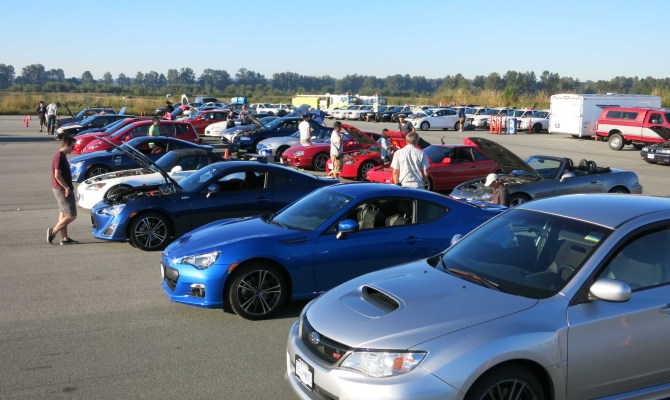
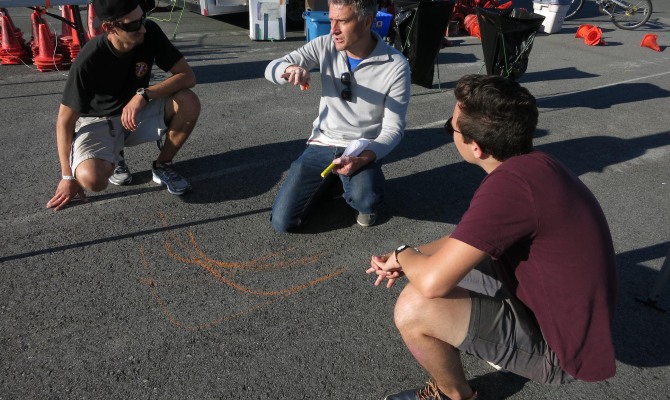
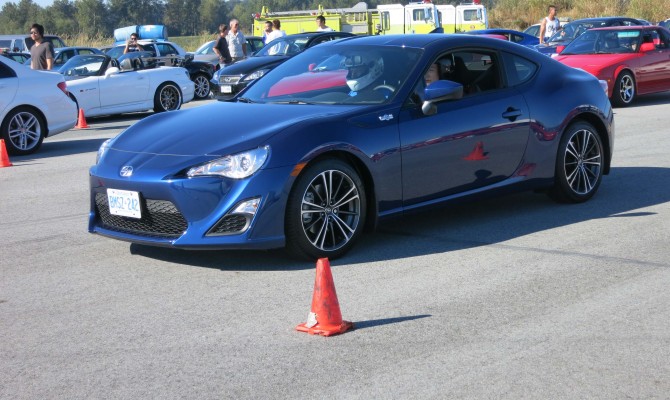
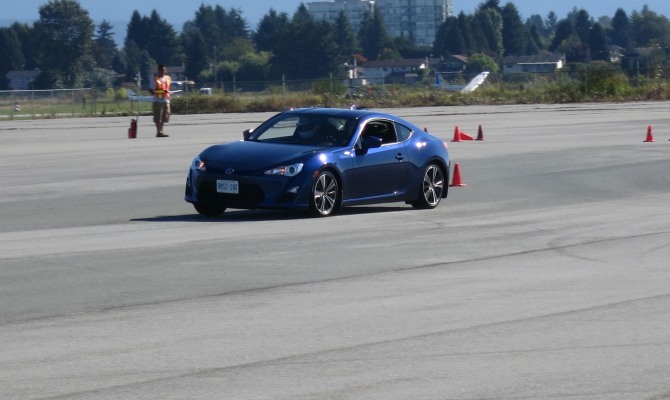
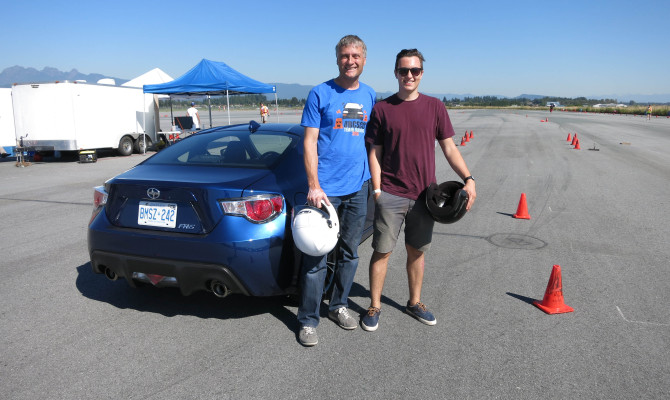
by Rob Rothwell, Driveway Canada
**********
Octane-fuelled learning crosses age and gender boundaries
With comments such as “amazingly passionate” and “best prof ever” peppered throughout the reviews on Rate my Professor, UBC’s physics/engineering Prof Dr. Andre Marziali clearly scores top marks from his students. However, his rave reviews extend beyond the walls of academia to the pavement of the Pacific Traffic Education Centre (PTEC), abutting the Pitt Meadows Airport.
As part of the Justice Institute of British Columbia (JIBC), PTEC is a driver-training facility for police and other first responders. It’s also where the UBC Sports Car Club, established in 1956, holds its Autocross 101 training programs. This is where you’ll find Professor Marziali providing drivers new to the sport with science-based racing theory before riding shotgun with them to deliver one-on-one in-car training.
Autocross racing is a sanctioned and regulated form of grassroots competition that enables participants to enjoy the thrill of motorsports without the burden of expenses associated with auto racing. It’s also a remarkably safe endeavour in which drivers race the clock for bragging rights, not each other. The course is generally confined to a large paved parking lot, or in this case, the massive pad of asphalt belonging to the JIBC’s PTEC.
Bright orange cones laid-out to create a circuitous web of challenging segments that flow from one to the other, and include such elements as offset gates, diminishing radius turns, long sweeping turns, G-circles, and the ever-popular inline slalom, define the course. While speed plays a role in the competition, science and driving ability carry the day. Understanding the limitations of tire grip and the physics of momentum and inertia help a driver anticipate and manage the effects of understeer and oversteer.
As world-champion rally racer Colin McRae once said, “straight roads are for fast cars, turns are for fast drivers.” Knowing the fastest line to follow through each corner, gate, and slalom is where savvy drivers make-up time. Skill is the great equalizer for horsepower. Autocross courses are heavily skill-dependent, not horsepower hungry. Artistry and finesse trump raw power every time, especially when the Professional Autocross Index – otherwise known as PAX – is applied.
PAX is a weighting system similar to a handicap in golf. It is a method of evening the playing field – or in this case, track – that requires a driver in a Ferrari to drive equally as well as a driver in a Honda Civic to score similar points. The reality is that most drivers race cars that are largely stock street-legal vehicles, which also serve as their daily driver.
Most legitimate sports car clubs provide driver training opportunities for autocross racing, and in some cases driver-training on a bona fide race track. The UBC Sports Car Club generally holds two Autocross 101 programs per year. I recently attended the end-of-summer session held at the PTEC facility. My 19-year old son Austin was invited to participate, which he eagerly did using a 2015 Scion FR-S graciously supplied by Toyota Canada.
The class consisted of 19 drivers, three of them female. Ages ran the gamut from fresh-face teenagers to empty nesters with newfound vitality and wheels to match.
The UBC Sports Car Club driving instructors are all exceptionally talented, capable, and safety minded. A ratio of two students per instructor ensures that everyone is given personal instruction specific to their needs and ability. Austin and Jordan – a 4th year UBC student of mechanical engineering, driving his modified 70s Datsun 510 – were assigned to Professor Marziali for the day.
A patch of clean pavement served as a chalkboard for our high-revving prof as he led his students through the physics of cornering and the inherent limitations of the four small contact-patches uniting road and vehicle. After students walked and analyzed the course with their respective instructors, the outdoor classroom was traded for the car.
With instructors seated next to them, students lined-up in pre-grid to await the green light that would launch their inaugural run through the autocross course. With the use of sophisticated electronic timing, every hundredth of a second was accurately captured as the each driver made three runs through the course; the fastest serving as a baseline to measure improvement against.
With baseline times established, the course was broken into its essential elements of a slalom line, a G-circle, a series of offset gates, and a diminishing-radius sweeper.
Supported by coaching from their respective instructors, students spent the better part of the day perfecting their skills at all four stations. In the afternoon, each student made four timed-runs of the complete course. Each improved upon their baseline by significant margins, some dropping from the 40 and 50-second range to the thirties and forties while others – such as Jordan – cracked the barrier in the high 20s. Austin, who has benefitted from similar advanced driver training in the past dropped from 33.73 seconds to 30.22 seconds.
While the day was filled with fun and excitement, it also served a greater purpose by developing driving skills that are completely transferrable to the street. In effect, making each student a better, safer driver.
(More information on Autocross 101 can be found at: www.ubcscc.com)
Recent Comments
- { Enjoyed your Forest of Bowland in the BMW X5M, particularly the photo of the BMW in front of the main part of Stonyhurst College where... }
- { Bantam designed the Jeep, not Willy's or Ford. The American military gave the original Bantam prototype to Willys and Ford to copy. There is plenty... }
- { All Escalades come with a 6.2-lilter V8 engine that produces 420 horsepower. A six-speed automatic is the only transmission offered and drives the rear wheels.... }
- { Alexandra is an excellent journalist. }
Popular Posts
- Journey to a ‘Sparkling’ Luxury Okanagan Resort “Four lucky readers will put a Dodge Journey’s weekend-...
- The Need For Speed: Hike Those Highway Limits More than half of those polled believe the province sho...
- Drives-U-Crazy… Erratic drivers. An early morning drive from Kelowna to Vancouver is nor...
- Readers Respond: The Pros and Cons of Increasing B.C. Speed Limits Increasing the speed limits will only increase risk to...
- Honda CR-V Review: The Compact Crossover To Get Things Done The CRV is a very stylish and aerodynamic crossover veh...






